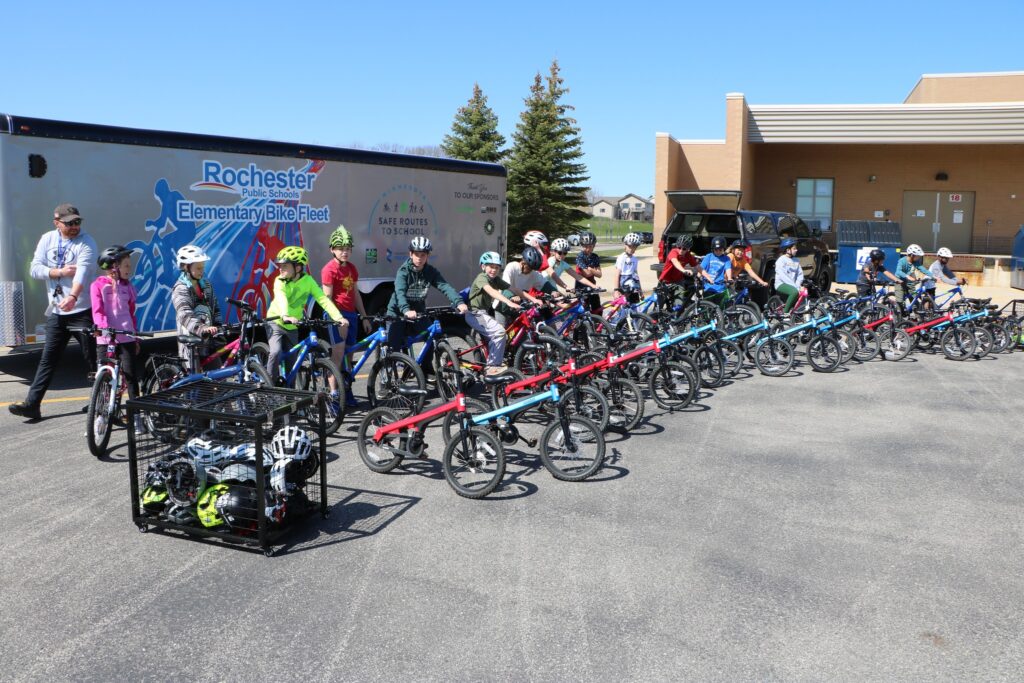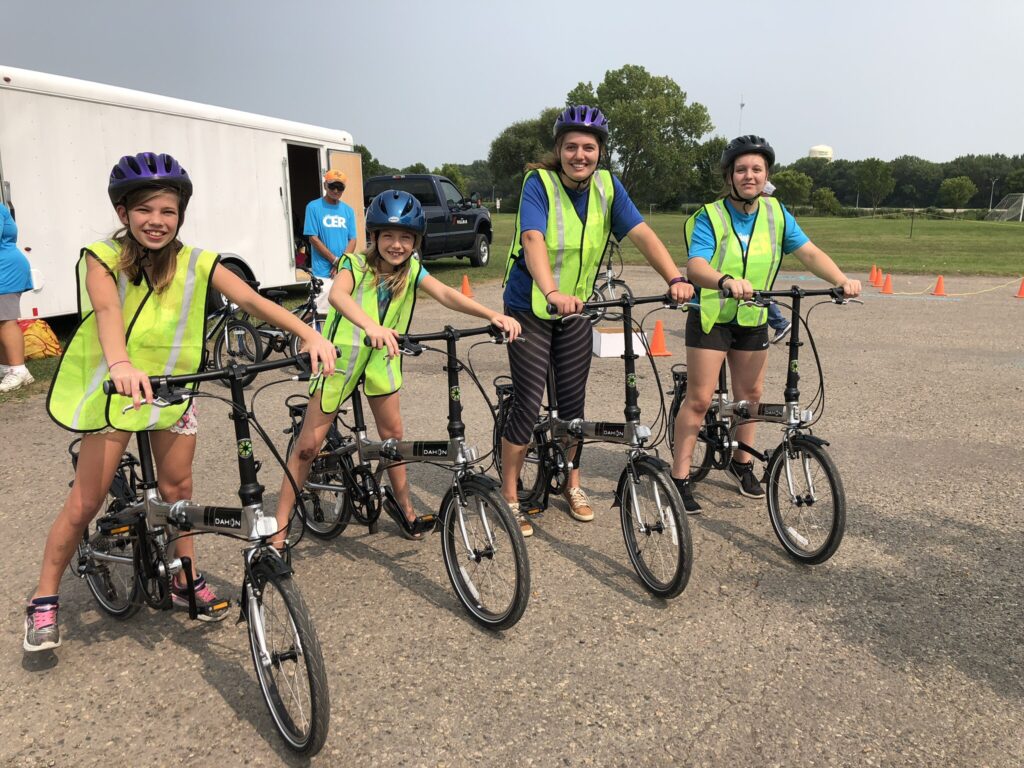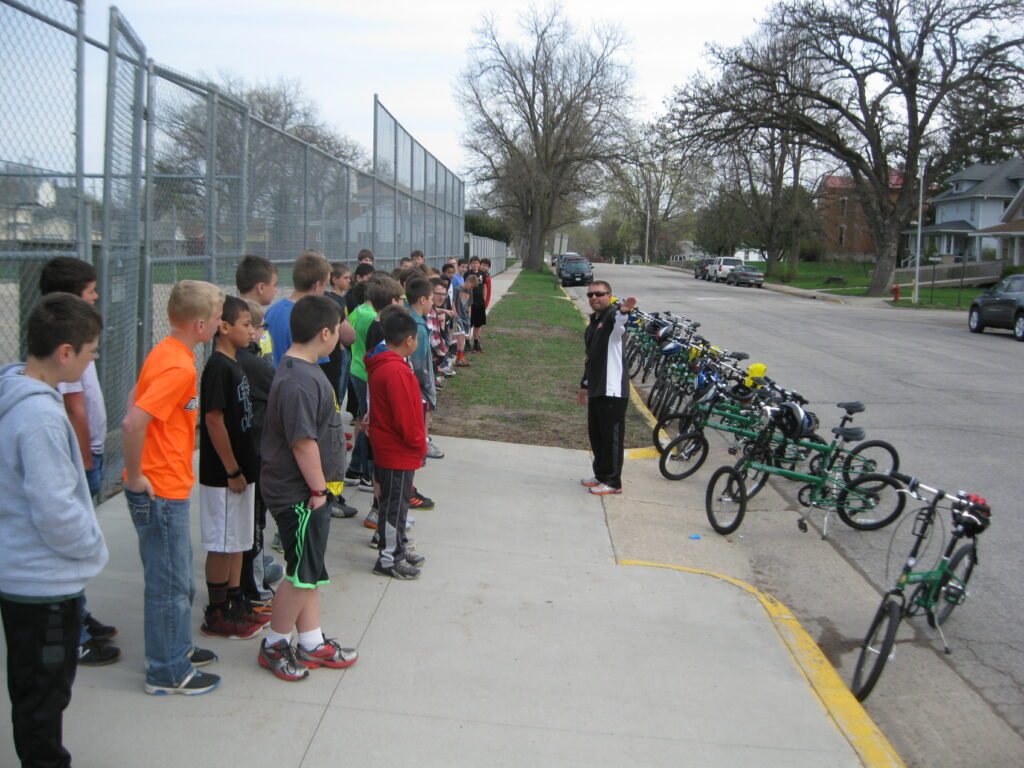Education
Education programs aim to teach students safe walking and biking behaviors, help improve kids’ bike riding skills or provide information to families about different transportation options that are available. Education programs may also include driver safety campaigns in the vicinity of schools. There are often opportunities to partner with police, community groups or others on education programs.
BikeMN and Minnesota Safe Routes to School can support your educational or encouragement activity implementing the WBF Ambassador Guide to support activities including Walk/Bike Rodeo, Walk! Bike! Fun! Group presentation, Walking School Bus, Bike Train, and Bus Stop and Walk. Click here to order supplemental materials .

Examples of Education Programs
- Walk! Bike! Fun! has been used in the classroom, at after school programs and as part of community education programs with a school bike fleet or borrowing a MnSRTS bike fleet.
- Bike rodeos led by school staff or local police and fire departments. They are held across the state at community events.
- Classroom Safe Routes to School education activities are common across the state. Examples include students mapping their own walking routes as a class project and teachers using bicycles to teach physics lessons.
- Earn-a-bike programs and bike mechanic skills are also taught in after school bike clubs and community education programs across the state. Many schools partner with a local bicycling education organization or a League Cycling Instructor.
Guiding Principles for Safe Routes to School Education

Following these principles from the National Center for Safe Routes to School will help make the most of your education efforts:
- Know your audience.
- Safe Routes to School education efforts may be directed at students, their parents, drivers and neighbors that live near the school.
- Some sub-groups may require particular attention, such as families who do not speak English as a first language; individuals with vision, hearing or mobility impairments; and families with low-incomes.
- Consider how children and adults learn best. Children benefit from a combination of educational methods such as group activities, hands-on skill building and discussion, while adults learn best when they feel the topic is relevant to them.

- Get the timing right.
- Pedestrian and bicyclist safety education should occur in advance of an encouragement activity, such as a Walk or Bike to School Day.
- The beginning of the school year in the fall is a good time to communicate with students and their families about arrival and dismissal procedures, and provide tips for safe walking and bicycling that can be practiced throughout the year.
- Practice makes perfect.
- Many of the pedestrian and bicyclist safety skills that children need cannot be taught solely by verbal instruction; they also require practical experience. Hands-on activities such as simulated street crossings and bicycle handling drills provide children with the opportunity to watch and apply safety skills.